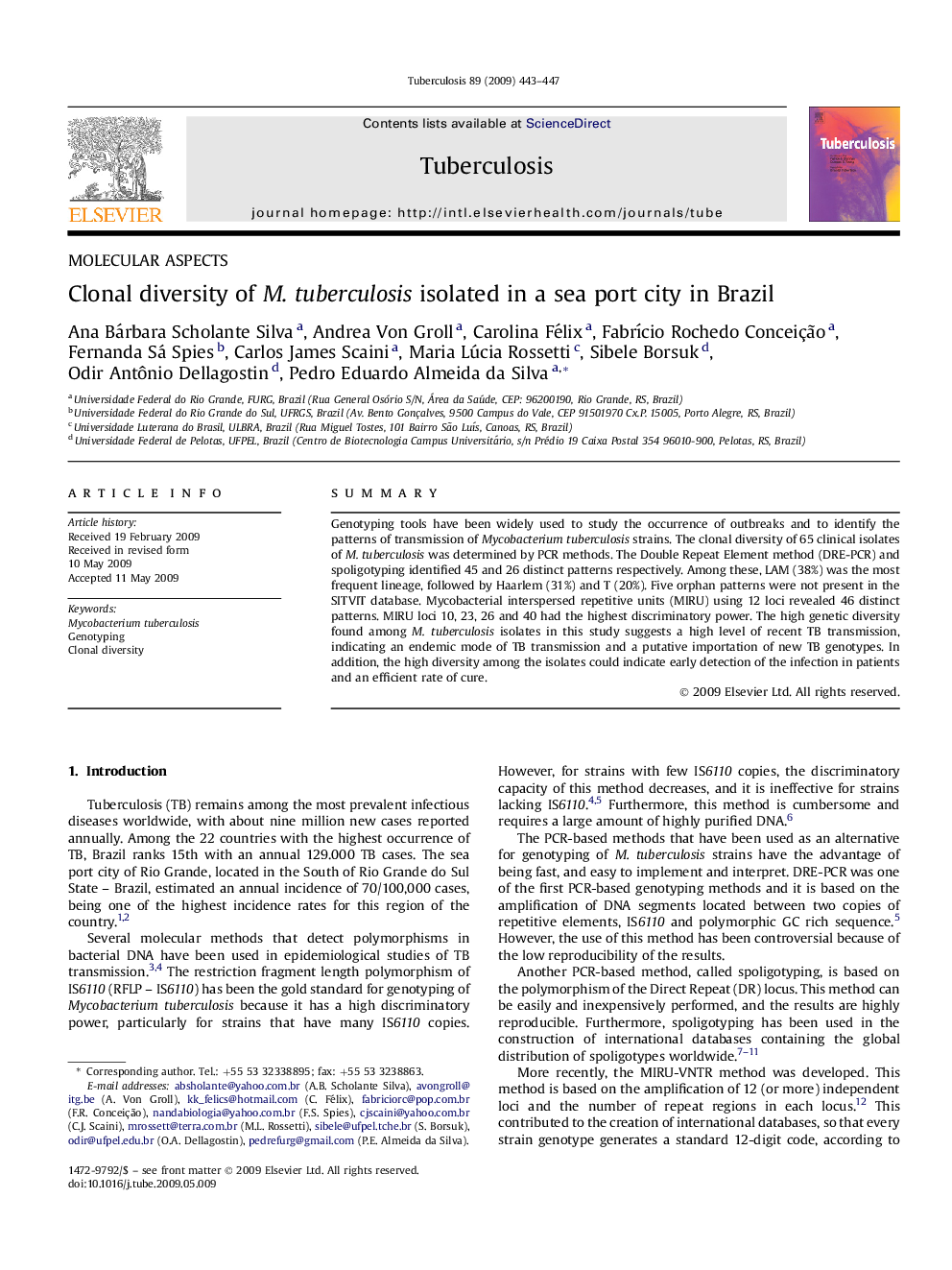| Article ID | Journal | Published Year | Pages | File Type |
|---|---|---|---|---|
| 2401780 | Tuberculosis | 2009 | 5 Pages |
SummaryGenotyping tools have been widely used to study the occurrence of outbreaks and to identify the patterns of transmission of Mycobacterium tuberculosis strains. The clonal diversity of 65 clinical isolates of M. tuberculosis was determined by PCR methods. The Double Repeat Element method (DRE-PCR) and spoligotyping identified 45 and 26 distinct patterns respectively. Among these, LAM (38%) was the most frequent lineage, followed by Haarlem (31%) and T (20%). Five orphan patterns were not present in the SITVIT database. Mycobacterial interspersed repetitive units (MIRU) using 12 loci revealed 46 distinct patterns. MIRU loci 10, 23, 26 and 40 had the highest discriminatory power. The high genetic diversity found among M. tuberculosis isolates in this study suggests a high level of recent TB transmission, indicating an endemic mode of TB transmission and a putative importation of new TB genotypes. In addition, the high diversity among the isolates could indicate early detection of the infection in patients and an efficient rate of cure.
